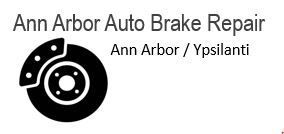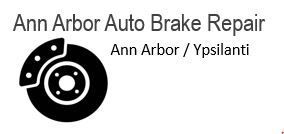SERVICES
We offer full-service top-quality brake repair services.
- We service on all foreign and domestic cars, SUVs, trucks and vans.
- All of our mechanics are experienced professionals who handle each and every project with the utmost professionalism.
- We appreciate the chance to service your vehicle's brakes, whether it’s a small repair or a major overhaul.
- We work with all major insurance companies and accept all insurance claims.
A vehicle brake inspection is more than just checking the stopping distance or listening for brake sounds. We will inspect the entire braking system to your vehicle will continue to be safe and perform as required for the weeks and months after we service your vehicle's brake system. Brake service inspections are recommended every 6-12 months to minimize the possible occurrences of larger cost repairs. See the Brake Inspection and Maintenance Checklist below.
Here is what we check:
- Brake pad/Brake shoe wear
- Brake rotor/Brake drum wear
- Brake calipers are working and not sticking
- Brake master cylinder is filled to the correct levels, with clean brake fluid
- Brake pedal travel and position
- Brake lights are functioning properly
- Brake Sensors are functioning and reset
- ABS module is functioning correctly
- Brake lines are rust-free and not joints are not leaking
- Emergency brake pedal/lever is engaging and releasing the emergency properly
Brake Rotors/Brake Drums: Brake rotors are the large discs that your brake pads press against to slow down or stop your vehicle. Similarly, brake drums are the large metallic cylindrical drums that your brake shoes press against to slow down or stop your vehicle. Over time, rotors and drums can wear down, lose metal, and/or warp, affecting your braking efficiency. While grinding rotors and drums is typically seen as a less expensive repair cost, the time and effort to perform that service vs buying new rotors/drums that are at the manufacturer's specification, most times result in a more costly repair.
Brake Pads/Brake Shoes: Brake pads and brake shoes are the components that create friction with the rotors/drums. They are the less costly components, and by design, typically wear out faster than other parts (including rotors and drums) and need to be replaced regularly.
Brake Fluid: Brake fluid is the hydraulic liquid that transmits the force of your foot on the brake pedal to the brake calipers. Old or contaminated brake fluid can affect your braking performance and should be changed or replaced regularly.
Having brake calipers checked for wear and performance is vital for maintaining optimal braking efficiency and safety. Worn or malfunctioning calipers can lead to uneven brake pad wear, reduced stopping power, and increased risks of brake failure, compromising the driver's ability to respond effectively in emergencies. Regular inspections help identify potential issues early, ensuring that the braking system functions smoothly and reliably, thereby enhancing the overall driving experience and safety on the road. More>
Having the brake master cylinder checked for leakage, wear, and performance is essential for the safe operation of a vehicle's braking system. A faulty master cylinder can lead to a loss of hydraulic pressure, resulting in diminished braking effectiveness and potentially dangerous situations while driving. Regular inspections can detect leaks or wear early on, ensuring that the braking system remains responsive and reliable, ultimately safeguarding the driver and passengers on the road.
Regularly inspecting brake lines/hoses for leakage, cracking, rust, and overall performance is crucial for ensuring a vehicle's safety and reliability. Damaged or compromised brake lines can lead to a complete brake failure, which poses significant risks during driving, including extended stopping distances or loss of braking altogether. By addressing potential issues early, customers can maintain optimal brake function, increase their vehicle's longevity, and ensure the safety of everyone on the road.
BRAKE SENSORS AND ELECTRONICS (ABS)
It is crucial for customers to have their brake sensors, lights, and electronics—especially the Anti-lock Braking System (ABS) — checked regularly to ensure their vehicle's safety systems are functioning properly. Malfunctioning brake sensors or warning lights can prevent drivers from receiving essential alerts about potential issues, increasing the risk of brake failure and accidents. Additionally, a well-maintained ABS enhances vehicle control during sudden stops and slippery conditions, significantly improving overall road safety.
BRAKE PEDAL POSITIONING
Having the brake pedal checked for proper height and activation range is essential for optimal driving comfort and safety, as an improperly positioned pedal can affect the driver's ability to react quickly in emergencies. Ensuring that the brake pedal functions correctly helps maintain effective braking performance, allowing for precise control and reducing the risk of accidents on the road.
Regularly checking the emergency brake handle and/or pedal for activation, release, and overall performance is vital for maintaining vehicle safety. A malfunctioning emergency brake can prevent the vehicle from being securely parked, increasing the risk of roll-away accidents, especially on inclines. Ensuring that the emergency brake functions effectively is an essential part of vehicle maintenance.

